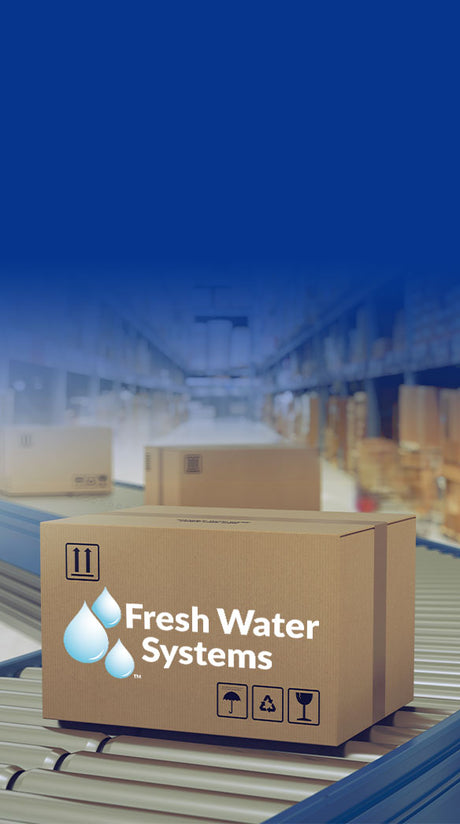Reverse Osmosis Systems
- Regular price From $279.00 Unit priceUnit price /Unavailable
Part #: PRO-41110-A
- Regular price $323.15 Unit priceUnit price /UnavailableVery low stock
Part #: PRO-41410-A
- Regular price From $299.00 Unit priceUnit price /UnavailableVery low stock
Part #: PRO-41310-A
- Regular price From $246.71 Unit priceUnit price /UnavailableVery low stock
Part #: PRO-41100-A
Save up to 5% with bulk pricing - Regular price From $234.71 Unit priceUnit price /Unavailable
Part #: PRO-41101-A
Save up to 5% with bulk pricing - Regular price From $246.59 Unit priceUnit price /UnavailableVery low stock
Part #: PRO-41401-A
Save up to 5% with bulk pricing - Regular price From $252.57 Unit priceUnit price /UnavailableLow stock
Part #: PRO-41300-A
Save up to 5% with bulk pricing - Regular price From $240.57 Unit priceUnit price /UnavailableLow stock
Part #: PRO-41301-A
Save up to 5% with bulk pricing - Regular price $322.38 Unit priceUnit price /UnavailableSold out
Part #: RO-4300RX-DLX
- Regular price $224.44 Unit priceUnit price /UnavailableSold out
Part #: RO-4300RX
- Regular price From $258.59 Unit priceUnit price /UnavailableVery low stock
Part #: PRO-41400-A
Save up to 5% with bulk pricing - Regular price From $1,349.73 Unit priceUnit price /Unavailable
Part #: 207315
- Regular price From $422.12 Unit priceUnit price /UnavailableVery low stock
Part #: 209530
- Regular price $676.79 Unit priceUnit price /UnavailableVery low stock
Part #: 04-04506
-

Get a Quote
Fast, Free, Custom
- Regular price From $390.00 Unit priceUnit price /UnavailableVery low stock
Part #: WQC4RO11-50PTNF
- Regular price $2,000.00 Unit priceUnit price /Unavailable
Part #: 207323
- Regular price $773.96 Unit priceUnit price /Unavailable
Part #: 3MRO401-01A
PuROLine & PuROTwist
Regular price $227.24 Unit priceUnit price /UnavailableSold outPart #: PT4000T50-SSAG
- Regular price $5,000.00 Unit priceUnit price /Unavailable
Part #: 200033
- Regular price From $3,286.44 Unit priceUnit price /Unavailable
Part #: 200030
- Regular price From $490.00 Unit priceUnit price /UnavailableSold out
Part #: WQC4RO13-100MT
- Regular price From $2,911.15 Unit priceUnit price /Unavailable
Part #: 200029
- Regular price $1,159.99 Unit priceUnit price /Unavailable
Part #: 208075
- Regular price $1,782.62 Unit priceUnit price /UnavailableVery low stock
Part #: 3MRO501-01
-

MOST ORDERS OVER $89
FREE SHIPPING
- Regular price $5,313.00 Unit priceUnit price /Unavailable
Part #: R4X40-2
- Regular price $3,910.90 Unit priceUnit price /Unavailable
Part #: 200031
- Regular price $6,193.45 Unit priceUnit price /Unavailable
Part #: 204384
Want to learn more?
How Reverse Osmosis Systems Work
A reverse osmosis (RO) system uses pressure to push water through multiple filtration stages that capture particles, chemicals, and contaminants. The process starts with pre-filtration using carbon and sediment filters to remove dirt, rust, and chlorine. Then, water passes through a semi-permeable membrane, separating dissolved solids and microscopic contaminants from clean water. Finally, a post-filter polishes the water before it reaches your faucet.
Many systems include a booster pump to increase water pressure, improving flow rate and maximizing the efficiency of the RO membrane. For systems connected to a refrigerator or ice maker, fittings and adapters make setup simple while maintaining high-purity water that tastes great and supports everyday drinking, cooking, and equipment use. Check out our full collection of booster pumps for RO systems.
Benefits of Reverse Osmosis Water Filtration
Reverse osmosis water filters offer several distinct advantages over other water purification methods. Namely, it’s a reliable, energy-efficient solution for producing clean drinking water without the use of chemicals or frequent filter replacements. RO filtration systems effectively reduce contaminants like PFAS, heavy metals, and microplastics, delivering water that’s safer and more refreshing.
- Produces better-tasting, odor-free water for drinking and cooking
- Reduces mineral buildup in kettles, coffee makers, and ice machines
- Offers a low-maintenance, cost-effective purification solution
For those seeking a simple way to upgrade their home water filtration setup or businesses in need of consistent purity, reverse osmosis systems are a trusted, time-tested choice. Learn more about how reverse osmosis works.
Home vs. Commercial Reverse Osmosis Systems
Reverse osmosis systems are available in both residential and commercial designs, each serving different capacity needs. Home RO systems are point-of-use units installed under a kitchen sink, providing purified water to a faucet and often to a refrigerator line. Residential systems are ideal for households and offices where taste, clarity, and convenience matter most.
Commercial RO systems, on the other hand, are built for higher output—typically above 500 gallons per day. They’re trusted in restaurants, laboratories, beverage production, aquariums, and industrial facilities that require large volumes of purified water. Both residential and commercial systems operate on the same principle, but they ultimately vary in size, pressure, and flow rate.
- Residential RO Systems: Compact, easy to install, perfect for homes or small offices
- Commercial RO Systems: High-capacity systems designed for continuous operation and greater filtration demands
Explore our water filtration systems for both home and business use.
Maintenance and Replacement Guidance
Routine maintenance is integral to consistent water quality and system longevity. Be sure to replace sediment and carbon filters every six to 12 months, depending on your water conditions and system use. The RO membrane, responsible for filtering dissolved solids, typically lasts two to three years with proper pre-filtration and pressure levels.
To keep your system running in tip-top shape:
- Replace filters and membranes on schedule using compatible RO membranes and filters
- Periodically clean and sanitize the storage tank to prevent bacterial buildup
- Check connections, tubing, and fittings for leaks or wear
- Use trusted brands such as neoPure and Pentair for reliable replacement parts
If your home has hard water, consider adding a water softening solution to protect the RO membrane from scaling and mineral buildup. And for an even bigger boost in efficiency, accessories like a permeate pump or RO booster pump can improve flow and reduce wastewater. Browse our full selection of reverse osmosis accessories.
Shop Reverse Osmosis Systems & Replacement Parts
Enjoy cleaner, safer, and better-tasting water with a reverse osmosis system built to last. From upgrading kitchens to supporting high-volume operations, Fresh Water Systems has every need covered with a robust selection of RO units, membranes, and accessories.















![3M Aqua-Pure 3MRO301 [SQC3] Reverse Osmosis System](http://www.freshwatersystems.com/cdn/shop/files/hc4hrgyeiiuurlb2yur1.jpg?v=1766914243&width=460)














